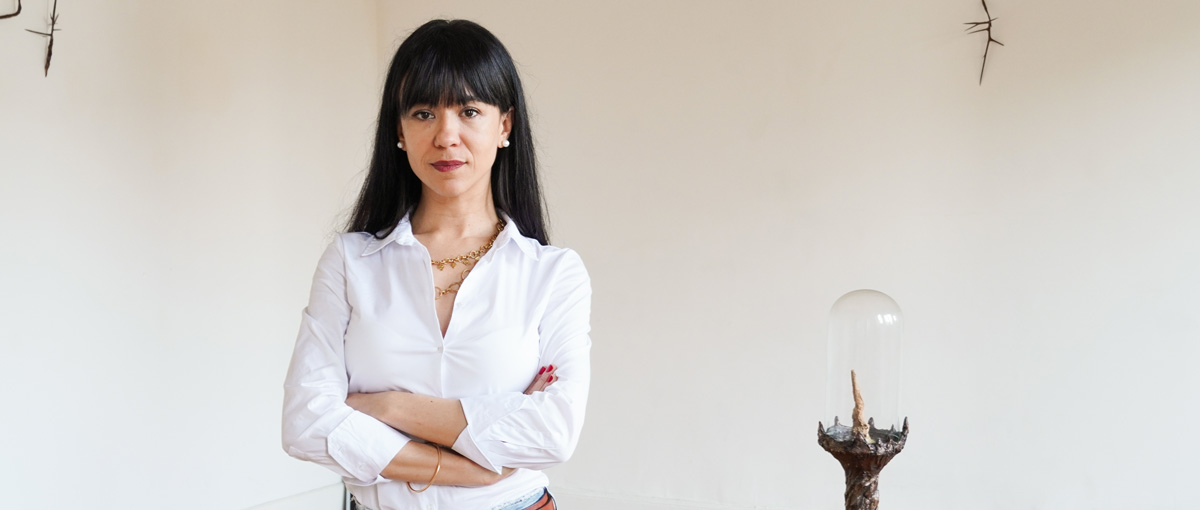#MIPexperience Art digital technologies
Gabriela Galati: a manager in the art world
| Author: Roberto Niño Betancourt
 As I’m about to finish my MBA journey at MIP soon, I wanted to share an interview focused on the Italian cultural scene, where I would like to continue working after graduating. I would like to introduce Gabriela Galati, a very special friend and colleague who came to Italy from Argentina twelve years ago and is currently Director of the Milanese art gallery aA29 Project Room. We had the opportunity to discuss the role of the curator as a manager, the art market in Milan, as well as the impact of digital technologies on the commercialization of artworks.
As I’m about to finish my MBA journey at MIP soon, I wanted to share an interview focused on the Italian cultural scene, where I would like to continue working after graduating. I would like to introduce Gabriela Galati, a very special friend and colleague who came to Italy from Argentina twelve years ago and is currently Director of the Milanese art gallery aA29 Project Room. We had the opportunity to discuss the role of the curator as a manager, the art market in Milan, as well as the impact of digital technologies on the commercialization of artworks.
What is the job of a curator?
The job of the curator varies, depending on where you work. In a contemporary art gallery, the director is usually the one who curates the shows. This means looking for artists for the gallery, as well as working with the artists who already collaborate with the gallery. Curating a solo show means accompanying the artist in the process, deciding which works will be featured and defining the central topic of the exhibition. For a group show, on the other hand, you pick the artists and the works that are most coherent with your idea. In smaller shows and commercial galleries, the independent or invited curator often acts more as an advisor or PR. Being a curator in a museum is very different, as you have to deal a bit more with bureaucracy. Exhibitions usually have bigger budgets and spaces and, in general, more research is involved. A curator in a museum is probably a scholar, who researches and works on a show for a year or even two, depending on the complexity of the exhibition. When you are bringing works from abroad you also deal with permits and shipping. You also write texts, curate catalogues and liaise with other institutions, as well as the press.
What does Milan mean to you?
Now it’s home for me. I really like living and working here and how things work. It’s a great place for managing a gallery and teaching as well. Even though it is a small city, a great share of the main cultural manifestations in Europe and around the world arrive here and it has evolved a lot in the last couple of years. There are many private institutions and patrons like Fondazione Prada and Hangar Bicocca bringing first class international art shows to Milan. However, the main complaint from the galleries since I’ve been here is the fact that there is no real Contemporary Art Museum in Milan. This means that there is no institutional commissioning for buying works of art from a museum, compared to other European capitals. Hopefully, this will change in the future.
Tell me about your work at aA29 Project Room and the role of this gallery in the Italian art scene?
This gallery is relatively new, having been open for only three years. Its role is to promote young and mid-career artists. This is a very good niche to avoid competing with large established galleries, to present young, emerging and experimental talents. Our roster of artists deals with different media and aesthetics. The central topic of their work is socially relevant issues like the environment, biocentric matters or antispecism, for example, according to which the gallery works. Most of our collectors are from the Italian market and some are quite young, actually. We also have medium-specific clients from the Americas who collect photography. Regarding our exhibitions, we are ending this summer season with an exhibition by the Italian artist, Matilde Sambo. In the fall we will have an exhibition by Kyle Thompson from the USA, in January Liu Yi from China and for spring 2020, Ivan Grubanov from Serbia.
What do you think has been the impact of social media and e-commerce on the art market?
Many small galleries that are struggling economically have decided to go virtual. I don’t think it is a bad model, depending on the price range for the commercialized artworks. Personally, I don´t look for artists on Instagram, but I have heard social media channels are becoming popular, especially for younger artists to promote and sell their work. For high price ranges, however, I don’t think it works, as you don’t buy expensive art online. In the visual art market, for example, what happened with music has never transpired. Platforms like Amazon and Yoox have tried selling art but for limited editions or low-priced works. Selling online has not even turned out well for Artsy, which showcases works of art from very important galleries. Nobody spends a million Euros to buy a work of art online unless they already know the work of an artist who is probably on the other side of the world. No-one who really knows how the contemporary art world works is going to put a tag with a price in the gallery or buy a piece of art with a price tag on Instagram. Most people need to see what they want to buy in real life, as they are making an important investment. Shopping for art in a physical space will still be a unique and relevant experience in the future.
Stay tuned for my next chapter, where I will tell you all about my Project Work experience.
About the author
|
|
Roberto Niño Betancourt
Roberto is a student of the International full time MBA. He is a Colombian filmmaker and new media artist based in Milan. |






